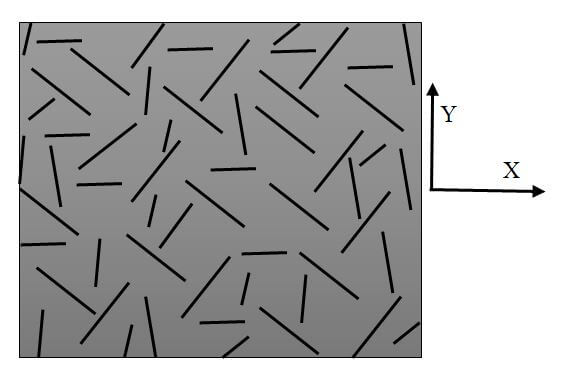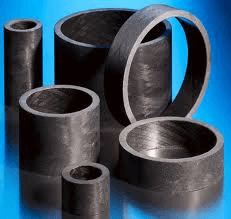Polymer Wear Components:
Are you considering switching to polymer wear components? Are you confused by the options on the market? In this article, we are going to take a look at how fiber reinforced plastic (FRP) materials can be successfully used for wear components.
Need even more informtion? Check out these post from the Advanced EMC Technologies Blog:
- Ultimate Cheat Sheet for Polymer Wear Components in Pumps
- 5 Top Reasons Why PEEK is Popular Choice for Seals
- How to Write an Effective Meta Description (Yes, They Still Matter)
FRPs
FRP stands for Fiber Reinforced Polymer, which is a specific subdivision of composites. The simplest composites, as you probably already know, consist of two phases: a matrix phase and a reinforcing phase. In an FRP, the matrix phase is the plastic resin and the reinforcing force would be the fibers.
The cool thing about composites is that when combined, their resulting properties can be far, far better than the properties of the constituents themselves. They can also be designed to have improved properties along certain directions, based on arrangement and layup of the fibers.
There are a variety of resins available for use in FRPs, but not so many choices in fibers. The most commonly used fibers include glass, carbon, graphite, and Kevlar©. Next we are going to look at a specific example that has proven useful in wear components.
Example: PFA + Carbon Fibers
A combination of PFA resin (as the matrix material) and carbon fibers (as the reinforcing material) has been found to be a good choice for wear components. When combined with the optimum percent weight fraction of carbon[i], you can get a material that has low creep, excellent thermal properties, and can perform well in the presence of harsh chemicals.
The matrix material, PFA, provides this composite with a low coefficient of friction, thermal stability, high temperature performance, very good chemical resistance. Carbon fibers are a very common choice for reinforcement. They are also chemically compatible, and provide high strength and stiffness at a very, very light weight. When used in a composite, can allow you to achieve the same level of strength at far less weight.
Other Polymer Wear Composites
TFM, PTFE, PEEK, PPS, Polyimides reinforced with carbon fiber, glass, glass-moly, etc.
Wear Component Design
When used in wear components, the carbon fibers are likely going to be randomly oriented in a single plane, which we will refer to as the x-y plane. If you think of the x-y plane as a sheet of paper, then, say, the wear component ring would be made of a stack of these sheets of paper and either pre-processed or post-processed into the shape of a ring.
Material Properties
Early we mentioned that composites can be designed to provide different levels of strength or stiffness in different directions. In the case of the fibers randomly oriented in the x-y plane, you will see higher compressive strength axially, or through the thickness of a wear ring, but higher tensile strength radially (or in the x-y plane). The ring will be stiffer both in tension and in compression radially (or, again, in the x-y plane).
Preferring Polymer Wear Components
More and more engineers are turning to polymer wear components as opposed to metal wear components. Not all high performance polymers are well adapted to wear applications, but fiber reinforced components can be designed for use in wear components for pumping applications.
References
[1] Let’s say the weight fraction of carbon is 15%. This means that the composite contains 15% carbon fibers by weight, which means if you were to weigh a sample of the material, burn off all the resin, and then weigh the remaining fibers, they would represent 15% of the original weight of the sample.
For an informative look at the impact of pumps on energy consumption download the “Consumed by Pumps Infographic.”




